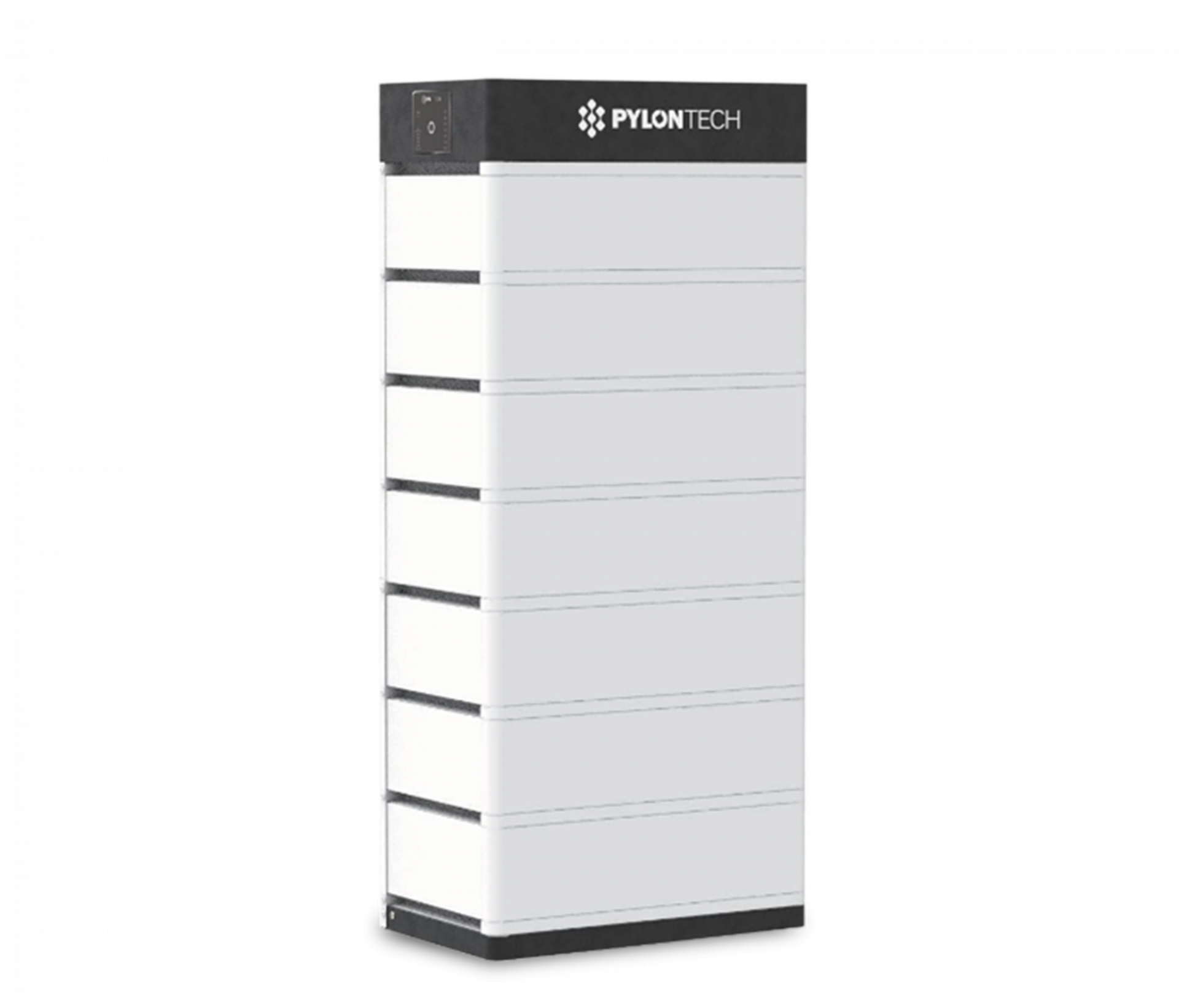Lithium Energy Storage System Pylontech FORCE-L
Solar Lithium storage system
48 VDC, up to 24.86 kWh (L1)
48 VDC, up to 14.21 kWh (L2)
The Pylontech FORCE-L systems are battery storage systems for home applications based on lithium iron phosphate batteries, some of the new energy storage products developed and manufactured by Pylontech. They can be used to support reliable power supply for various types of appliances and systems. FORCE-L systems are particularly suitable for application scenes where high power, limited installation space, limited load capacity and long life are required. They have a modular structure and can be easily installed and expanded by plugging them into each other.
Open in the catalogueDownloads
Characteristics
- Very high cycle stability of over 8000 charge/discharge cycles*
- Very high depth of discharge (DoD) up to 95% @ 25°C
- Design life up to 15 years
- Extremely simple installation and commissioning for enormous time savings
- Compatible with many popular hybrid inverters
- Modular system for easy and fast capacity expansion
- Absolutely intrinsically safe lithium technology – Lithium iron phosphate / LiFePo4
Special feature
- Very high storage density – low weight and compact design
- Up to 7 batteries can be used in a modular way *Cabinet systems and constellations on request
- Modular system for individual scaling
- 7-year manufacturer warranty
Specifications
| Battery module | L1 (FL48074) | L2 (FL4874M) | |
|---|---|---|---|
| Cell technology | Lithium-Iron-phosphat (LiFePo4) | Lithium-Iron-phosphat (LiFePo4) | |
| Battery Module Voltage | 48 V | 48 V | |
| Battery Module Capacity | 74 Ah / 3,552 kWh | 74 Ah / 3,552 kWh | |
| Communication | RS485, CAN | RS485, CAN | |
| Weight / Dimensions | 36,5 kg / 600 x 380 x 170 (W x D x H in mm) | 35,5 kg / 450 x 296 x 296 (W x D x H in mm) | |
| Operation Temperature | +0… +50°C bei Ladung / -10… 50°C bei Entladung | ||
| Design life / Cycle life | > 15 years @ 25°C / > 8000 cycles @ 25°C* | ||
| Transfer Certificate | UN38.3 | ||
| Controller (BMS) | L1 (FC0048-100S) | L2 (FC0048M-100S) | |
| Dimensions (W x D x H in mm) | 150 x 600 x 380 | 190 x 450 x 296 | |
| Weight | ca.10 kg | ||
| Communication | Modbus RTU\CAN | ||
| Model overview FORCE-L1 | Larger systems with up to 7 battery modules and up to 24.86 kWh available on request | ||
| Battery module quantity | 2 | 3 | 4 |
| Max. quantity of modules | 7 | ||
| Battery System Capacity | 7,1 kWh | 10,65 kWh | 14,2 kWh |
| Battery System Voltage | 48 VDC | ||
| Battery System Charge Upper-Voltage | 53,5 VDC | ||
| Battery System Discharge Lower-Voltage | 44,5 VDC | ||
| Battery System Charge/Discharge current | max. 75 A | max. 100 A | |
| Dimensions (W x D x H in mm) | 530 x 600 x 380 | 700 x 600 x 380 | 870 x 600 x 380 |
| Weight in kg | 86,5 | 123 | 159,5 |
| Protection Class | IP55 | ||
| Product Certificate | VDE2510-50, IEC62619, CE RED, IEC62477-1 | ||
| Model overview FORCE-L2 | A maximum of 4 modules can be combined to form an L2 system with max. 14.2 kWh | ||
| Battery module quantity | 2 | 3 | 4 |
| Max. quantity of modules | 4 | ||
| Battery System Capacity | 7,1 kWh | 10,65 kWh | 14,21 kWh |
| Battery System Charge Upper-Voltage | 48 VDC | ||
| Battery System Discharge Lower-Voltage | 53,5 VDC | ||
| Battery System Charge/Discharge current | 44,5 VDC | ||
| Battery System Voltage | max. 75 A | max. 100 A | |
| Dimensions (W x D x H in mm) | 822 x 450 x 296 | 1120 x 450 x 296 | 1415 x 450 x 296 |
| Weight in kg | 82 | 117,5 | 153 |
| Protection Class | IP55 | ||
| Product Certificate | VDE2510-50, IEC62619, CE RED, IEC62477-1 | ||
The Pylontech FORCE-L1 and FORCE-L2 storage systems consist of lithium iron phosphate (LiFePo4) accumulators with a battery management system, or BMS for short, which constantly monitors the status of the accumulators down to the individual cells and protects them from overcharging, overvoltage and overtemperature, among other things.
In this way, the BMS prevents premature failure of the batteries due to environmental influences or incorrect use.
The modular design allows the individual configuration of the storage system to the required capacity by simply interconnecting the desired number of modules.

